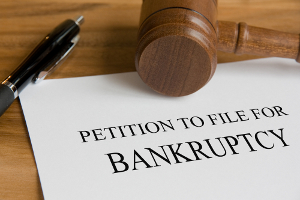 Bankruptcy is a legal proceeding in federal court that allows individuals who cannot pay their debts to address the claims of their creditors. Bankruptcy is governed by federal law, and all cases take place within the federal bankruptcy courts. Upon filing a bankruptcy petition, an automatic stay goes into effect which stops all creditors from collecting debt from the filer. The stay continues in effect during the pendency of the bankruptcy case, or until the bankruptcy court lifts the stay. Upon completion of the bankruptcy case, the debtor receives a discharge, and is no longer liable for any debts affected by the discharge order.
Bankruptcy is a legal proceeding in federal court that allows individuals who cannot pay their debts to address the claims of their creditors. Bankruptcy is governed by federal law, and all cases take place within the federal bankruptcy courts. Upon filing a bankruptcy petition, an automatic stay goes into effect which stops all creditors from collecting debt from the filer. The stay continues in effect during the pendency of the bankruptcy case, or until the bankruptcy court lifts the stay. Upon completion of the bankruptcy case, the debtor receives a discharge, and is no longer liable for any debts affected by the discharge order.
Consumer cases usually fall into one of two categories: Chapter 7 or Chapter 13. Chapter 7 cases last four to five months. Debtors list all of their assets and all of their debts. Exemptions are used to protect the assets, and if the debtor has property that cannot be exempted a trustee may liquidate the assets and pay the proceeds to the creditors. In Texas we have very good exemptions, and as a result a very small percentage of Chapter 7 cases result in liquidation of the debtor’s assets. Chapter 7 bankruptcy is a great way to eliminate debt and get a fresh start.
Chapter 13 bankruptcy cases typically last three to five years. Debtors file a plan to reorganize their debt with the bankruptcy court. The plan is set for a hearing called a confirmation hearing, where the debtor seeks court approval of the plan. Creditors can file objections to confirmation if they feel they are being treated unfairly in the plan. Once all objections are resolved the plan is confirmed, assuming the debtor has met the other requirements for confirmation. Once the debtor makes the final payment as per the terms of the confirmed plan, he receives a discharge and the case is closed. Any unsecured debt listed in the plan but not paid is discharged, unless it falls into one of the exceptions to discharge. Chapter 13 bankruptcy is a great way to protect secured property from repossession or foreclosure and to reorganize debt in a way that is affordable.